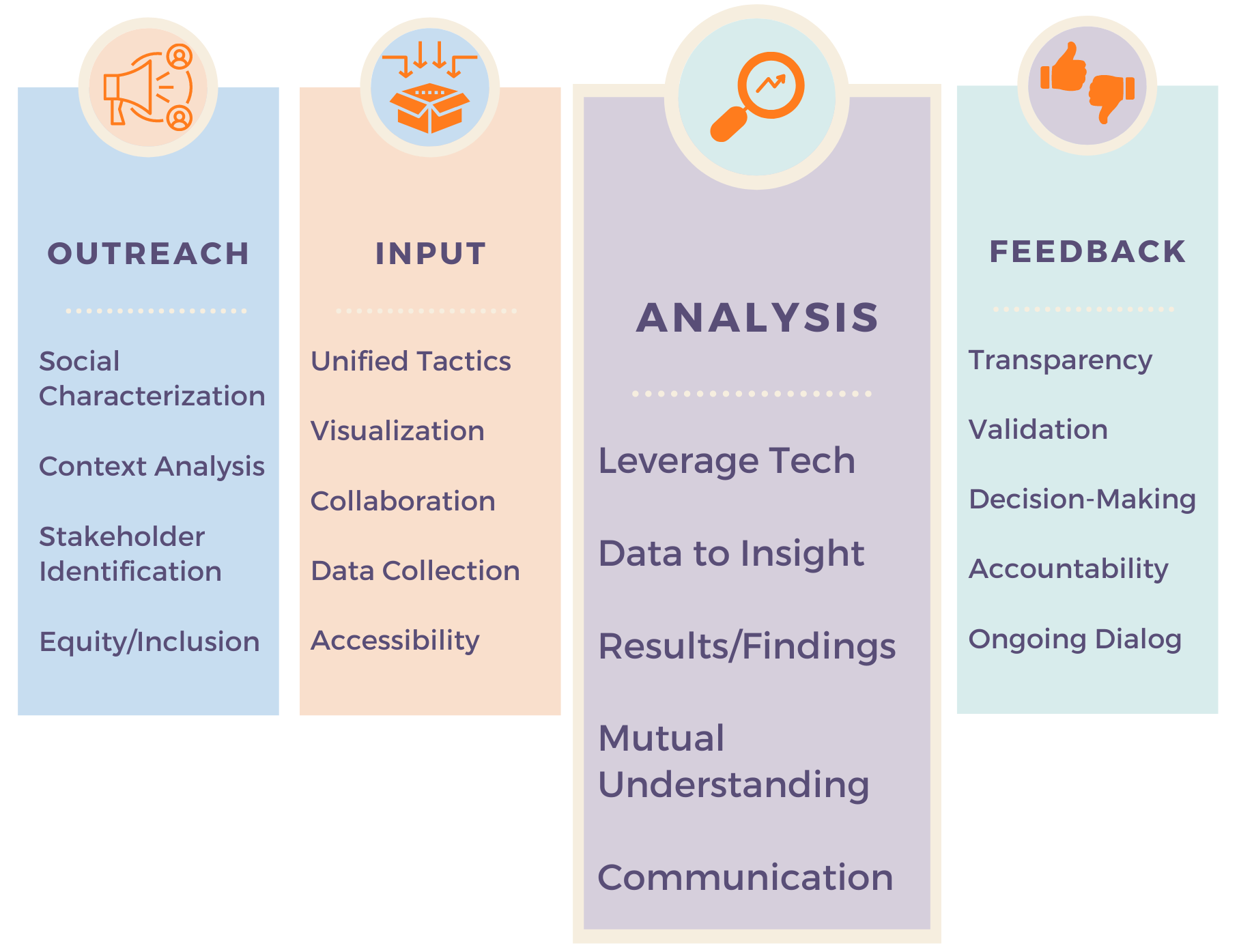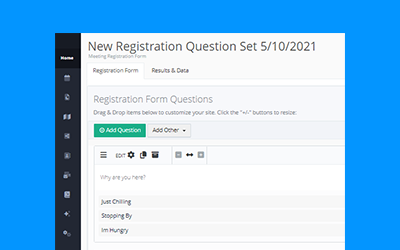
The Power of Smart Technology
Installment #3 of the Effective Engagement Blog Series:
In this series, we will discuss the four elements of an effective engagement strategy (outreach, input, analysis, and feedback) and how practitioners may address the post-2020 resiliency and trust building challenges associated with the ongoing change in community expectations.
In this installment we discuss the power of smart technology to gain greater clarity and insight from public input.
Leveraging Technology
The execution of a public outreach and engagement strategy almost always results in the need for data analysis. Whether it be to analyze the input or evaluate the effectiveness of the strategy, this pillar piece of the process will become the source of truth for insight development and course correction indicators.
Whether it be an online survey or community listening session, leveraging smart technology accelerates the ability of public engagement practitioners to be agile at all stages of the data collection process.
Data to Insights
The curse and beauty of insight development is the process by which aesthetically pleasing pie charts and infographics are born from blocks of text-based input or verbal commentary. Anyone with experience “coding” the sometimes paragraphs long input knows how labor intensive it can be to manually pull out the key perceptions, themes, and sentiments.
Leveraging smart technology to do the heavy lifting will decrease the likelihood of bias and human error, while freeing up more time to focus on interpreting the results and communicating findings.
 |
  |
| The Public | Engagement Hub can automate and transform qualitative data into quantitative insights. |
Results & Findings
Results and findings from an engagement initiative should be monitored periodically throughout the lifecycle of the initiative to ensure that any needed tactical adjustments are made prior to the presentation of findings.
| Indicator/ Observation | Diagnosis & Example Treatment |
|---|---|
| Low Response Rate |
A low response rate is symptomatic of a variety of factors (messaging, tactics, interest etc.). Tactical experimentation can help clarify if the chosen tactic is not effective. Example: Online Survey
|
| Participant Demographics |
Initial results showing a homogenous or oversampled demographic composition that is not representative of the broader community. In these cases, this participant indicator may indicate the need for tactical adjustment or course correction. Example: Online Survey
|
|
Low Attendance Rate |
Similar to the response rate, low attendance can be symptomatic of a variety of factors. Adjustments can help increase meeting accessibility. Example: In-person Meeting
|
|
High Attendance Rate |
Generally, not of concern, unless meetings exhibit a notable misrepresentation similar to the participant demographic indicator. In cases of under-representation, adjustments can help increase meeting accessibility. Example: In-person Meeting
|
|
Feedback |
While not all feedback is ideal, there are some indicators that point to issues with messaging, awareness, or communication. Problematic participant feedback may look like: A high emotional responses to non-controversial topics Adjusting/ expanding the messaging and communication supports better alignment. Example: Project Goals
|
Once the results support the efforts to capture a representative sample of the community the interpretation of the findings should tie together the goals of the engagement initiative with the participant perceptions and contributions.
Communication & Consensus Building
The development of initial findings is not the final stage of analysis. These initial understandings represent a unique opportunity to deliver insights back out to the community for additional collaboration and validation.
This validation process helps participants see that their voices were heard, and demonstrates that sincerity of the effort to build consensus.
Even in cases where consensus is not reached, the responsibility of maintaining the flow of bi-directional communication contributes to the ongoing public trust building exercise.
The cycle of the engagement strategy should be flexible and adaptive with time built in to expand or contract the efforts needed to educate, analyze, validate, and communicate.
Once validated, the presentation of findings to decision-makers moves the iterative process forward with open dialog among key decision-makers.
Tune in for our next installment on Public Engagement Feedback to learn more about the completion of an effective engagement strategy.
Want to learn more about how PublicInput can help supercharge your data analysis? Schedule a chat with one of our engagement experts to learn more about:
- The Public | CRM is a living dashboard that stores historical data over time and across projects. Designed to help governments move past data collection to actionable tactics, the Public | CRM module automatically synchronizes to develop a deeper understanding and segmentation after each interaction.
Upgrade Public | CRM with the Public | Equity Mapping feature to visualize participant data overlaid with custom environmental and socio-economic data specific to your community or project area.
- The Public | Engagement Hub features:
A Public Portal that increases project awareness and transparency by providing a customized listing of projects, meetings, and resources all in one place.
Surveys that provide dynamic options for informing and engaging the public with mapping, budgeting, videos, images, and PDFs.
Meetings that increase equity and access by removing the need for software downloads or Broadband Internet, creating automatic multilingual closed captioning, and guaranteeing transparency with open government compliance.




